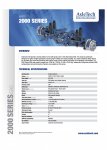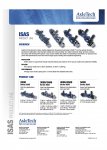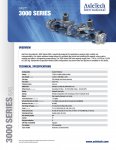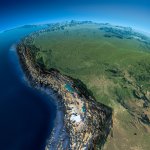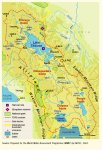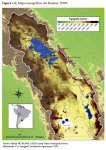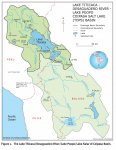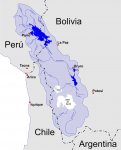biotect
Designer
Hi Haf-E,
Simply fantastic response. More than I could have hoped for!! Much more helpful and informed about electric vehicle gearing than anything written in the Endless-sphere thread. You don't need to read that thread, because what you just wrote above is far more sophisticated.
So if I am reading you correctly, I can continue to insert 90 %? Or should I be inserting 95 %?
I really like the idea of two axles low-geared, and one axle geared for high speeds. This would never have occurred to me in a million years, and would simplify the drive-train from a mechanical point of view, right? But as you wrote, what we are really talking about would be four motors low-geared, and two motors high-geared? Good to know that six motors would be ideal with independent suspension, and also good from an electrical wiring and redundancy point of view. But if I am reading you correctly, these six electric motors would not be mounted in-wheel, because washboard conditions would destroy them. Rather, they would be mounted on the frame, with short "mini-axles" or "mini-driveshafts" (if one can call them that?) connecting them to the wheels, and of course these mini-axles would have flexible or "universal" joints (also called "U-joints" or "Cardan joints" -- see https://en.wikipedia.org/wiki/Universal_joint ). So the wheel jumps up and down with the independent suspension, but not the motor, which is protected from such shocks, especially on washboard.
Your post sounded a bit contradictory at one point. You had just written that six motors would be good for all sorts of reasons, but then you returned to the three-motor solution with three solid axles and diff locks. So which is it?
In this scenario where a division of labor occurs between axles for different speeds, would the drivetrain efficiency be better than 90 %? Would it be 95 %? Could it still be 95 % in the three-motors solution, if there were cross-axle differentials with diff locks? Or would complete drive-train efficiency be only 95 % in the six motors solution?
And: which axle (or which two motors) would be high speed, and which ones low speed, i.e. under 50 kph? Front, middle, back?
There is no question that the TerraLiner will have larger tires, Michelin 14.00 R20 XZLs or equivalent. If memory serves, that's what egn uses on Blue Thunder, and that's what most 6x6 expedition motorhomes built on a MAN TGS chassis are equipped with. These tires are 125.8 cm in diameter, or 49.53 inches -- see https://www.vrakking-tires.com/stoc...earch=Search&gclid=CL-58c-TvsoCFWXnwgoddk0Efg and https://www.vrakking-tires.com/stock/truck-tires/43-1400r20-michelin-xzl-new.html. So with such tires, ground clearance is automatically about 55 - 60 cm with solid axles (??; not certain about this...). Albeit with tire deflation on sand or soft earth, ground clearance would be less.
If I am reading the images of Oshkosh's TAK-4i suspension in operation correctly, the same would be true even for independent suspension. In the images posted earlier in the thread the "up travel" on military-grade, off-road-capable independent suspensions was minimal, and all or most of the play was in the down-stroke. See posts #671 and #672 at http://www.expeditionportal.com/for...w-6x6-Hybrid-Drivetrain?p=1670213#post1670213 ; then #1100 at http://www.expeditionportal.com/for...w-6x6-Hybrid-Drivetrain?p=1738766#post1738766 ; and then, for a full visual analysis, see posts #1106 to #1112 at http://www.expeditionportal.com/for...w-6x6-Hybrid-Drivetrain?p=1738799#post1738799 to http://www.expeditionportal.com/for...w-6x6-Hybrid-Drivetrain?p=1738858#post1738858 , and posts #1119 to #1125 at http://www.expeditionportal.com/for...w-6x6-Hybrid-Drivetrain?p=1739065#post1739065 to http://www.expeditionportal.com/for...w-6x6-Hybrid-Drivetrain?p=1739197#post1739197 .
In the following images, which were taken from videos of the TAK-4i suspension in operation, the center-line clearance never gets worse than the wheel-centers on the up-stroke. The axle merely "straightens out", so all the play is on the down-stroke:









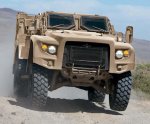
So in terms of ground clearance, military-grade independent suspension seems to function just like a solid axle: a big rock hitting just one wheel pushes the entire vehicle upwards, and not merely just that wheel. With a solid axle a big rock hitting just one wheel lifts the entire axle, but perhaps not necessarily the entire vehicle?
Sorry that I lost you once I started talking about a 12 m TerraLiner and a TOAD garage. But as I've written, I am designing with a very specific market in mind: full-timing retired couples who want to slow-travel, often staying at particular spots for many months. I am not designing for zippy travel by middle-aged types who are using their vehicles on one or two-month vacations....:ylsmoke:
Again, many thanks for your post. It was simply terrific. And I am really grateful that it wasn't evasive and too complicated, as per the responses that I was getting over in Endless-sphere.
All best wishes,
Biotect
Simply fantastic response. More than I could have hoped for!! Much more helpful and informed about electric vehicle gearing than anything written in the Endless-sphere thread. You don't need to read that thread, because what you just wrote above is far more sophisticated.
So if I am reading you correctly, I can continue to insert 90 %? Or should I be inserting 95 %?
I really like the idea of two axles low-geared, and one axle geared for high speeds. This would never have occurred to me in a million years, and would simplify the drive-train from a mechanical point of view, right? But as you wrote, what we are really talking about would be four motors low-geared, and two motors high-geared? Good to know that six motors would be ideal with independent suspension, and also good from an electrical wiring and redundancy point of view. But if I am reading you correctly, these six electric motors would not be mounted in-wheel, because washboard conditions would destroy them. Rather, they would be mounted on the frame, with short "mini-axles" or "mini-driveshafts" (if one can call them that?) connecting them to the wheels, and of course these mini-axles would have flexible or "universal" joints (also called "U-joints" or "Cardan joints" -- see https://en.wikipedia.org/wiki/Universal_joint ). So the wheel jumps up and down with the independent suspension, but not the motor, which is protected from such shocks, especially on washboard.
Your post sounded a bit contradictory at one point. You had just written that six motors would be good for all sorts of reasons, but then you returned to the three-motor solution with three solid axles and diff locks. So which is it?
In this scenario where a division of labor occurs between axles for different speeds, would the drivetrain efficiency be better than 90 %? Would it be 95 %? Could it still be 95 % in the three-motors solution, if there were cross-axle differentials with diff locks? Or would complete drive-train efficiency be only 95 % in the six motors solution?
And: which axle (or which two motors) would be high speed, and which ones low speed, i.e. under 50 kph? Front, middle, back?
There is no question that the TerraLiner will have larger tires, Michelin 14.00 R20 XZLs or equivalent. If memory serves, that's what egn uses on Blue Thunder, and that's what most 6x6 expedition motorhomes built on a MAN TGS chassis are equipped with. These tires are 125.8 cm in diameter, or 49.53 inches -- see https://www.vrakking-tires.com/stoc...earch=Search&gclid=CL-58c-TvsoCFWXnwgoddk0Efg and https://www.vrakking-tires.com/stock/truck-tires/43-1400r20-michelin-xzl-new.html. So with such tires, ground clearance is automatically about 55 - 60 cm with solid axles (??; not certain about this...). Albeit with tire deflation on sand or soft earth, ground clearance would be less.
If I am reading the images of Oshkosh's TAK-4i suspension in operation correctly, the same would be true even for independent suspension. In the images posted earlier in the thread the "up travel" on military-grade, off-road-capable independent suspensions was minimal, and all or most of the play was in the down-stroke. See posts #671 and #672 at http://www.expeditionportal.com/for...w-6x6-Hybrid-Drivetrain?p=1670213#post1670213 ; then #1100 at http://www.expeditionportal.com/for...w-6x6-Hybrid-Drivetrain?p=1738766#post1738766 ; and then, for a full visual analysis, see posts #1106 to #1112 at http://www.expeditionportal.com/for...w-6x6-Hybrid-Drivetrain?p=1738799#post1738799 to http://www.expeditionportal.com/for...w-6x6-Hybrid-Drivetrain?p=1738858#post1738858 , and posts #1119 to #1125 at http://www.expeditionportal.com/for...w-6x6-Hybrid-Drivetrain?p=1739065#post1739065 to http://www.expeditionportal.com/for...w-6x6-Hybrid-Drivetrain?p=1739197#post1739197 .
In the following images, which were taken from videos of the TAK-4i suspension in operation, the center-line clearance never gets worse than the wheel-centers on the up-stroke. The axle merely "straightens out", so all the play is on the down-stroke:










So in terms of ground clearance, military-grade independent suspension seems to function just like a solid axle: a big rock hitting just one wheel pushes the entire vehicle upwards, and not merely just that wheel. With a solid axle a big rock hitting just one wheel lifts the entire axle, but perhaps not necessarily the entire vehicle?
Sorry that I lost you once I started talking about a 12 m TerraLiner and a TOAD garage. But as I've written, I am designing with a very specific market in mind: full-timing retired couples who want to slow-travel, often staying at particular spots for many months. I am not designing for zippy travel by middle-aged types who are using their vehicles on one or two-month vacations....:ylsmoke:
Again, many thanks for your post. It was simply terrific. And I am really grateful that it wasn't evasive and too complicated, as per the responses that I was getting over in Endless-sphere.
All best wishes,
Biotect
Last edited:


